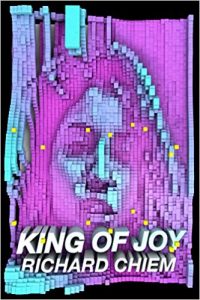Archita Mittra Reviews Sun of Blood and Ruin by Mariely Lares
 Sun of Blood and Ruin, Mariely Lares (Harper Voyager 978-0-06325-431-2, $30.00, 384pp, hc) February 2024.
Sun of Blood and Ruin, Mariely Lares (Harper Voyager 978-0-06325-431-2, $30.00, 384pp, hc) February 2024.
Pitched as a reimagining of Zorro against the backdrop of Mexican anticolonial resistance, Sun of Blood and Ruin – the debut novel by Mariely Lares – manages to be a fun comfort read with a distinctively folkloric bent. Like its gender-flipped Zorro protagonist who constantly switches between two identities (Lady Leonora, a member of the Spanish nobility, and Pantera, the shape-shifting vigilante fighting to end the subjugation of the indigenous peoples), the book swiftly shifts across genres – from court intrigue to heroic adventure to slow-burn romance to an epic tale of gods with their own agendas – which results in a breezily written and somewhat diverting page-turner, though its central focus felt a bit muddied to me.
Sun of Blood and Ruin follows a trend of recent fantasy novels where the female protagonist is forced to lead a double life – usually a member of the privileged class who is also unusually skilled as a con artist, allowing them to move between royalty and common folk with relative ease. In this particular case, Leonora is of mixed heritage. So, on one hand, she has ties to the Spanish royalty and spends the early chapters navigating court politics, marriage proposals, and political alliances, which are narrated with charm and hilarity. On the other, she has also spent ten secret years training in sorcery and combat with Master Toto, one of the Indigenous inhabitants, though shapeshifter Pantera, in her freedom fighter guise, seems to have not accomplished much (except for a personal vendetta against a racist general) and is seemingly out of touch with the plans of the actual resistance groups. She also appears to be quite flummoxed in her interactions with Andres, a secretive figure from the Nahua group who accompanies her as she visits various tribes and learns about their factionalism through the latter half of the novel, even as prophecies about an impending apocalypse and her fate to die young loom ominously in the air.
Though the novel gets progressively more meandering and crowded with minor characters, it does have its strengths. Lares’s prose is lucid and straightforward, in keeping with the demands of the genre, with the chapters cautiously short and structured so that the reader will keep wondering what happens next. I also enjoyed the descriptions of the Mesoamerican world, including the cuisine, flora, and fauna, as well as the stories about the various deities that pepper the pages – though some readers might find the execution a bit on the infodumpy side. The presence of gods and their agents also reminded me of a similar book, The Sun and the Void by Gabriela Romero Lacruz which also explores anticolonial themes and the pressure to figure out one’s own path.
Interestingly enough, though the Spanish are an ever-looming threat, their presence in the narrative retreats somewhat in the latter half, which is more concerned with our main character coming to terms with her history and cultural heritage. Another small detail I liked was how Lares is careful to depict Indigenous people as not one monolithic community presenting a unified front to the Spanish conquistadors, but as a diverse yet distinct sets of tribes and factions, with interweaving histories and traditions – something that the colonial enterprise often strives to erase. Additionally, the dialogue exchanges between Leonora and the other characters were often humorous, leading me to chuckle out loud.
However, the central slow-blooming romance between Leonora and Andres did not work for me, though I was quite looking forward to it. There seemed to be precious little to their relationship, beyond a physical attraction and mutual passive-aggressive behavior. They didn’t seem to have any chemistry nor commonalties (apart from a vested interest in keeping secrets), and thus their scenes of sexual tension as well as the later revelations about the characters’ godly heritage were never compelling, ultimately making for – at least, to my tastes – a rather uninteresting love story. I would have liked to see the side characters more developed. Except for the figure of Amalia, another lady of the court with her own agendas, they seemed to function as props to propel the narrative, which could have benefitted from more twists and complications.
Overall, Sun of Blood and Ruin is a fun and occasionally funny book steeped in Mesoamerican folklore that may appeal to readers keen on a quick, entertaining read with a culturally rich slant.
Archita Mittra is a writer and artist, with a fondness for dark and fantastical things She completed her B.A (2018) and M.A (2020) in English Literature from Jadavpur University and a Diploma in Multimedia and Animation from St. Xavier’s College.
When she isn’t writing speculative fiction or drawing fanart, she can be found playing indie games, making jewelry out of recycled material, reading a dark fantasy novel, baking cakes, or deciding which new Tarot deck to buy.
She lives in Kolkata, India, with her family and rabbits.
This review and more like it in the May 2024 issue of Locus.
 While you are here, please take a moment to support Locus with a one-time or recurring donation. We rely on reader donations to keep the magazine and site going, and would like to keep the site paywall free, but WE NEED YOUR FINANCIAL SUPPORT to continue quality coverage of the science fiction and fantasy field.
While you are here, please take a moment to support Locus with a one-time or recurring donation. We rely on reader donations to keep the magazine and site going, and would like to keep the site paywall free, but WE NEED YOUR FINANCIAL SUPPORT to continue quality coverage of the science fiction and fantasy field.
©Locus Magazine. Copyrighted material may not be republished without permission of LSFF.





